Photographing Australian Plants
Lighting - things to think about
Overcast or full sun?
Taking flower photos in overcast light or in full sunlight can make a big difference.
Full sun usually provides more light, so a smaller aperture can be used giving greater depth-of-field.
Overcast light, or sun behind a cloud, gives a 'softer' image, less contrast, one flower does not cast a shadow on another.
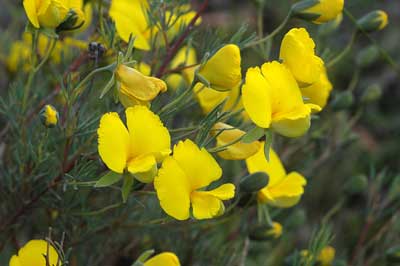
Gompholobium huegelii – sun behind a cloud, diffuse light
|

Gompholobium huegelii – full sun, more contrasty lighting
|
Back-lighting
Back-lighting, where the sun is behind the subject being photographed, is very handy for emphasising small details like the 'hairiness' of a plant.
 Grevillea saccata, back-lit to show hairs. (click to enlarge)
Grevillea saccata, back-lit to show hairs. (click to enlarge) |
Back-lighting to show hairs or glands
Grevillea saccata
Most grevillea flowers are not hairy, so it is important that this feature show up in the photograph.
This photo is taken using sunlight, coming from behind and to the left of the flowers.
A piece of black velvet was held behind the flowers to show off the hairiness.
The photo has the appearance of a ring-flash photo, but it is not. |
The four images below all illustrate back-lighting. The flowers or leaves all have fine structures that are enhanced by light from behind.
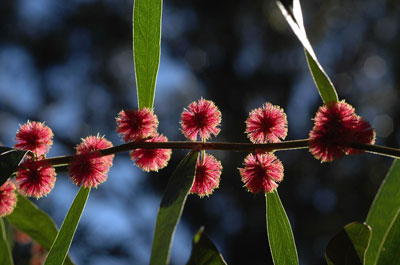 Acacia leprosa 'Scarlet Blaize'
Acacia leprosa 'Scarlet Blaize' |
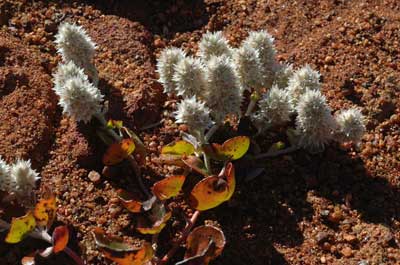 Ptilotus roei
Ptilotus roei |
 Drosera peltata, the back-lighting highlights the drops of sticky liquid on leaves
Drosera peltata, the back-lighting highlights the drops of sticky liquid on leaves |
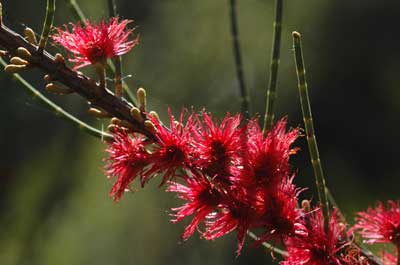 Allocasuarina lehmanniana subsp. ecarinata, female flowers
Allocasuarina lehmanniana subsp. ecarinata, female flowers |
Using natural light or flash

Melaleuca armilaris, overcast lighting (click to enlarge)
Natural light, either sun or diffuse (as above) gives a more natural look.
Often there is less depth-of-field because a larger apperture is used.
|

Melaleuca armillaris, flash lighting, (click to enlarge)
Flash lighting allows a very small apperture to be used, this results in greater depth-of-field, giving the photo a 'sharper' though less natural look.
Light coloured flowers stand out against the darker background.
(this flash set-up is explained here, general flash discussion here)
|

Natural sunlight, with its highlights and shadows, clearly shows the texture of the petals of this Velleia paradoxa flower. This is especially the case with the 'frilly' edge to the petals
|
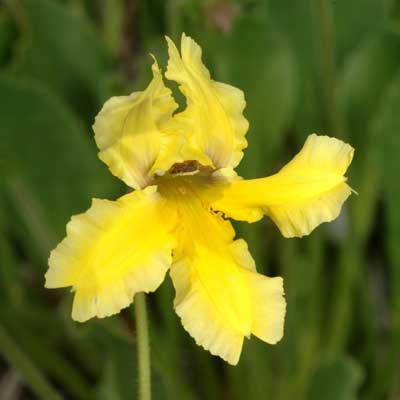
The same Velleia paradoxa flower photographed using a ring-flash. The photo has a sharper look, but much of the texture of the petals has been lost, especially the clear distinction between the centre of the petal and the 'frilly' edge. Yellow flowers are difficult to capture with ring-flash.
|
Flowers look different with different lighting
 |
 |
 |
The Desert Wonga Vine, Pandorea doratoxylon, had some flowers high up against the sky, and some low down with the desert sand in the background.
Photographing them against the blue sky shows the sun coming through the petals (top left).
Photgraphing them with flash gives the petals a much more 'solid' appearance, a different yellow colour, and an unnatural dark blue sky.
(top right).
Photographing them against the red sand gives yet another yellow colour, and the natural lighting allows the shape of the flower to be more clearly seen (bottom left). |
^ top

![An Australian Government Initiative [logo]](/images/austgovt_brown_90px.gif)














